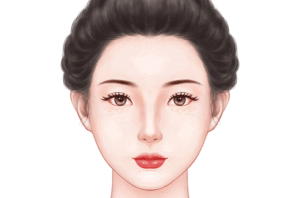Fat granules are small, pinhead-sized, white bumps that appear on the skin, particularly around the eyes. Laser treatment is typically used to remove these granules. Laser treatment uses a laser with a specific energy level, precisely targeted by a computer, to melt the granules. Laser treatment can generally last for over 10 years.
Applicable people
Fat particle removal is suitable for people with fat particles on their faces.
Taboo groups
1. People with scar-prone constitution.
2. People with coagulation disorders, low immune function, and chronic wasting diseases.
3. People who are sensitive or allergic to light.
4. Those who have used hormones, salicin, or photosensitizing drugs within 1 month.
5. People with local skin inflammation, rash or wounds.
6. Persons with mental or psychological abnormalities.
7. Women who are pregnant, lactating or menstruating.
8. Those who have a pacemaker.
Technical/surgical risks
1. Pigmentation: Most of the pigmentation is temporary and can be treated by taking vitamin C orally or applying hydroquinone cream topically.
2. Skin damage: Mainly manifested as burns. High doses can cause burns, erythema, and blisters. During treatment, doctors should closely monitor the patient’s local skin reactions and avoid repeated high-dose, high-intensity procedures on the same area.
3. Infection: Infection may occur occasionally when treating moles with larger wounds. Pay attention to postoperative care and use antibiotics if necessary.
4. Scars: These are mostly caused by scar-prone constitution, wound infection or improper treatment parameters, and should be avoided as much as possible.
Postoperative care
After removing fat particles, you should pay attention to local care, diet adjustment and lifestyle behavior management.
1. Local care: Keep the wound dry and clean after treatment to prevent infection; strengthen moisturizing and sun protection to avoid sunburn and pigmentation; avoid getting the wound wet before the scab falls off, you can apply ointment containing antibiotics, and do not peel off or scratch the scab too early; do not exfoliate within 1 week after treatment.
2. Diet adjustment: avoid smoking, drinking and spicy food.
3. Lifestyle management: You can wash your face 2 days after treatment, but dry it immediately with a soft towel after washing; avoid strenuous exercise to prevent the scab from falling off due to external force; try to use less or no irritating cosmetics within 2-3 months after treatment; if there is an inflammatory reaction or scar hyperplasia on the wound after treatment, you should return for a follow-up visit in time.
Preoperative precautions
1. Communicate with the doctor before the operation to understand the specific process of fat particle removal, related risks, preoperative design, etc., and be mentally prepared.
2. Complete preoperative examinations, check blood routine, coagulation function, blood sugar, electrocardiogram, etc., rule out surgical contraindications, and confirm that the patient is healthy and in good general condition.
3. Avoid exposure to the sun 2 weeks before treatment, otherwise pigmentation and scars are likely to occur.
4. Clean yourself thoroughly before treatment and do not wear makeup on the day of treatment.
5. Wear appropriate protective glasses to protect your eyes before the operation.
Surgical procedure
The removal of fat particles mainly includes steps such as disinfection and laser irradiation.

